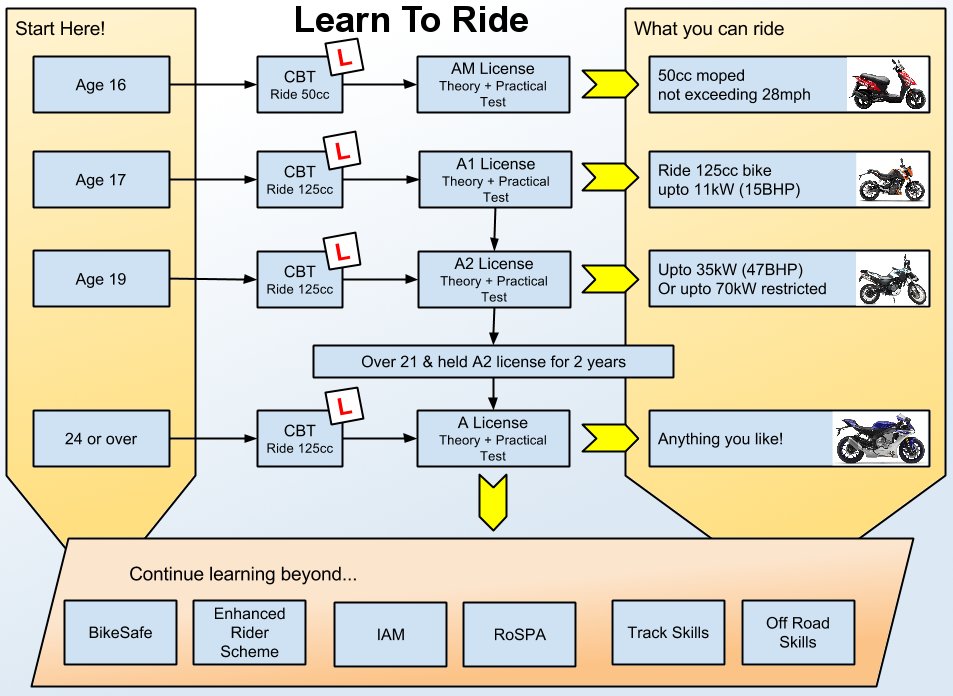In January 2013 the UK motorcycle tests were radically overhauled, leading to much confusion on how to obtain a license. Below is a simple flowchart to help you learn to ride a motorbike and explain what you can ride at your age and what license is applicable.
 Provisional Moped/Driving License
Provisional Moped/Driving License
Before you do anything else, ensure you have a provisional moped or driving license. If you don’t already have this, you can apply for it from the DVLA here.
Learn To Ride Motorcycle
CBT
For all riders, a motorcycle CBT (Compulsory Basic Training) course is a requirement. This can be covered in a day, covers the very basics and expires after two years. It will allow you to ride a small 50cc or 125cc bike on L plates, but with no pillions and not on any motorways.
Theory Test
Before you can take any further license you need to pass a motorcycle theory test (not the same as the car theory test). This can be booked here. Your theory test certificate is valid for two years, which should be ample time to complete your practical tests.
The AM, A1, A2 & A Full Tests
The AM, A1, A2 and A licenses all require two practical tests and the theory test to be completed. However, the theory test need not be repeated if you’ve held an earlier full license for more than two years or the test certificate hasn’t expired. On passing a full test you can ride without L plates, with a pillion and on the motorway (AM license excepted).
The AM, A1 and A2 licenses will place a power restriction on the bikes you can ride. Only the A license will allow you to ride anything. The earliest age one can pass the A license is 21, achieved by taking their A2 license at 19, then going for the A license two years later.
New riders will always pay higher insurance premiums, so do check out these tips to get cheap motorcycle insurance UK.
Further Motorbike Training Beyond
Learning should not stop after passing your full test
Learning should not stop after passing your full test, it has merely begun. It is highly recommended that after getting some riding experience you undertake further tuition and courses to help hone your skills. Many of these courses can potentially earn you an insurance discount too and should make you a better, more competent and safer rider.
BikeSafe – Run by local police force across the country, to provide a day of learning in both the classroom and out on the road. More info.
Enhanced Rider Scheme – A DLVA scheme, implemented by private riding schools. Generally, riding skills are first assessed, then recommended tuition is provided. More info.
IAM Skills For Life – A longer course run by a local Institute of Advanced Motorists group who provide theory and observed rides over many weeks/months, culminating in a long practical test. More info
RoSPA – This course will prepare you for the Advanced Riding Test, either in a one week course or over a longer-term, depending on the school or group running it. Riders will receive a Bronze, Silver or Gold rating and will need to retake the test every three years to ensure skills are maintained. More info.
